Drive the most stunning section of Oregon's Columbia River Gorge.
The Columbia River Gorge is 20-miles east of Portland, and is one of Oregon's most photographed and famous attractions. This spectacular 80-mile canyon on the Columbia River, was carved out at the end of the last Ice Age by the Missoula Floods.
There are over 90 waterfalls on the Oregon side of the Columbia River Gorge, cascading from dramatic cliffs. The most famous of these is Multnomah Falls.
The best place to stay in the Columbia River Gorge is the tourist town of Hood River. There's also some popular lodging choices outside of Hood River, like the relaxed Edgefield McMenamins Hotel at Troutdale, luxurious Skamania Lodge in Stevenson, and the trendy Society Hotel at Bingen.
Ticket reservations: To reduce car congestion, timed ticket reservations might be required to visit Multnomah Falls from June through September. Also, a new Timed Vehicle Access Permit is being introduced from late May through early September, to drive along the Historic Columbia River Highway.
10 best things along the Historic Columbia River Highway
The most scenic section of the Columbia River Gorge is the 19-mile Historic Columbia River Highway, from Troutdale to Dodson. (Skip the modern Interstate 84 that runs parallel to the Historic Highway along the river's edge that bypasses most points of interest).
1. Start the Historic Highway at Troutdale.
The entrance to the Historic Highway is near the pretty town of Troutdale, 20 minutes east of Portland. This picturesque highway was built between 1913-22 and winds past waterfalls, through enchanting forests, historic viaducts and tunnels in the Columbia River Gorge. It was designed to capitalize on the best viewpoints. This was America's first scenic highway and was considered an incredible engineering feat.
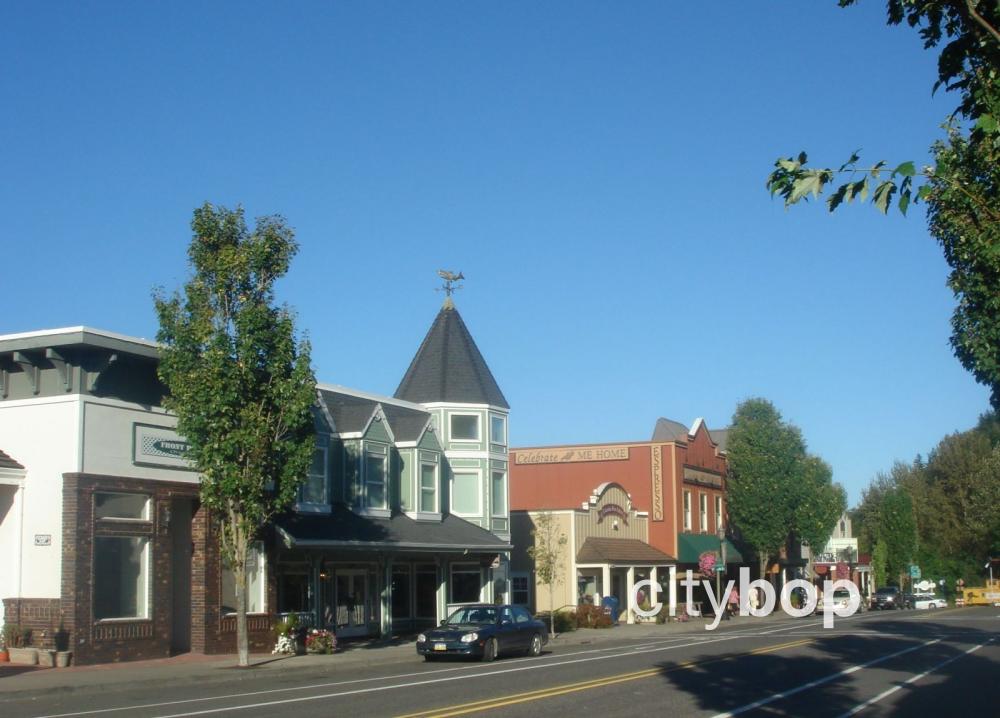
2. Drive up to Sherrard Point for spectacular views
Drive 15 minutes east of Troutdale, then take the turn-off from the Historic Highway up to Larch Mountain. From here it's a 17-mile drive up the mountain to the summit at Sherrard Point. (Avoid this section of the drive during winter and spring due to the snow). The drive up to Larch Mountain is a detour from the Historic Highway, but well worth the effort for the rewarding views.
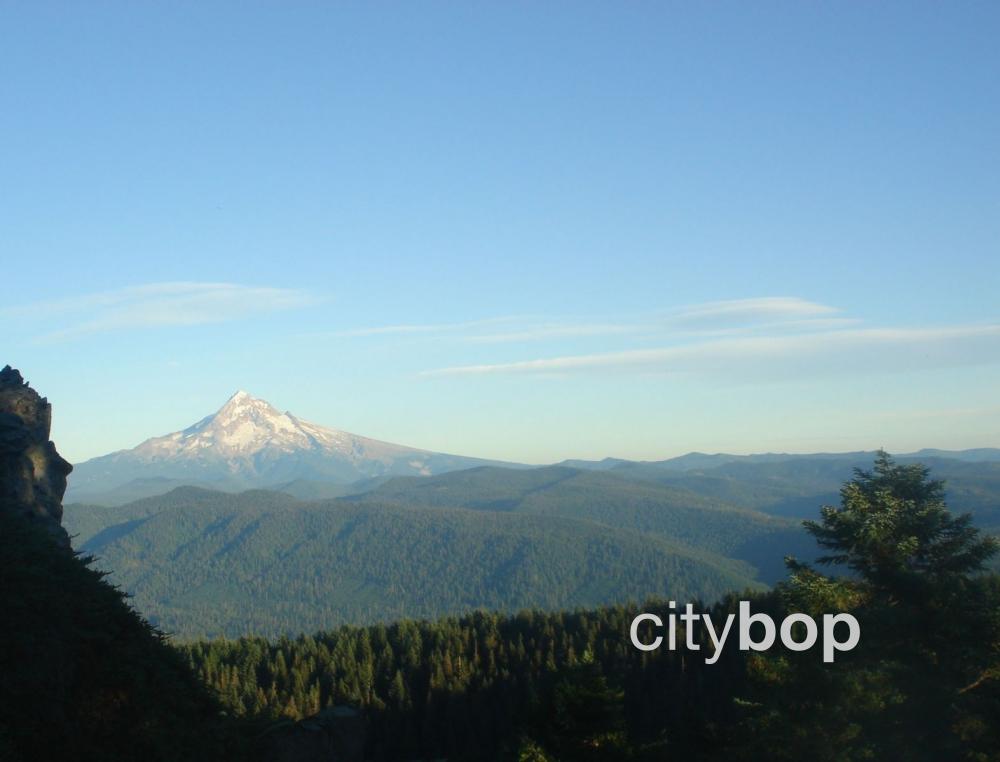
Once you reach the parking lot, take the ¼ mile walk to the summit of Larch Mountain at Sherrard Point for spectacular 360-degree views of Mt Rainier and Mt Jefferson.
Here's a closer look at breathtaking Mt Jefferson in the Cascade Mountain Range. It's the second highest mountain in Oregon, with an elevation of 10,495 feet.
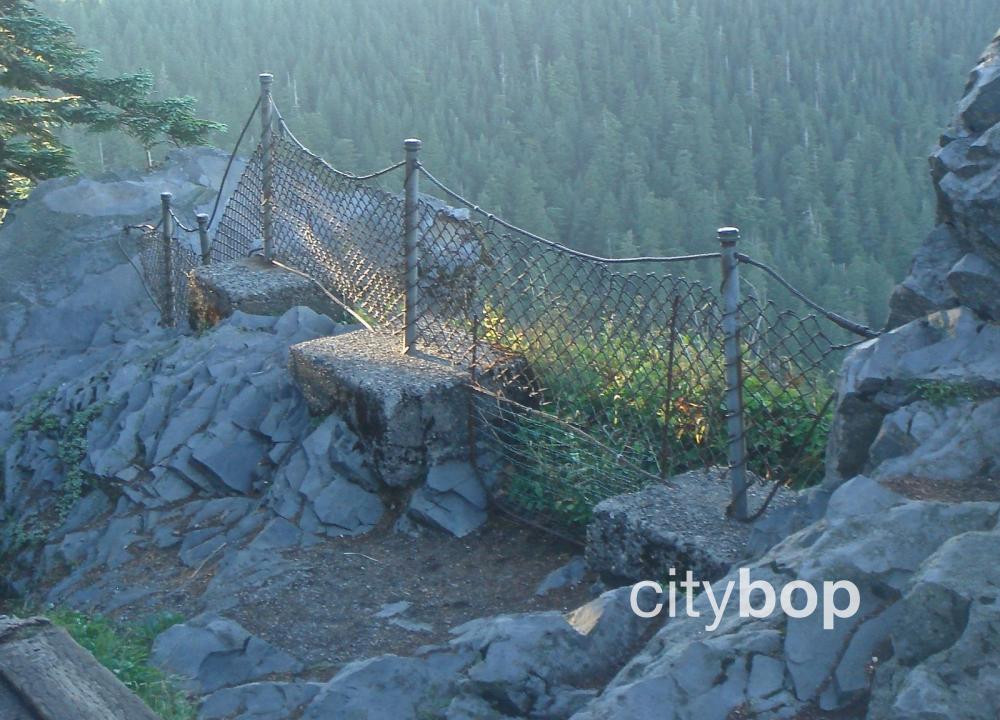
The Sherrard Point viewpoint is at an elevation of 4,062 feet on Larch Mountain, and if you're scared of heights you should avoid this viewpoint.
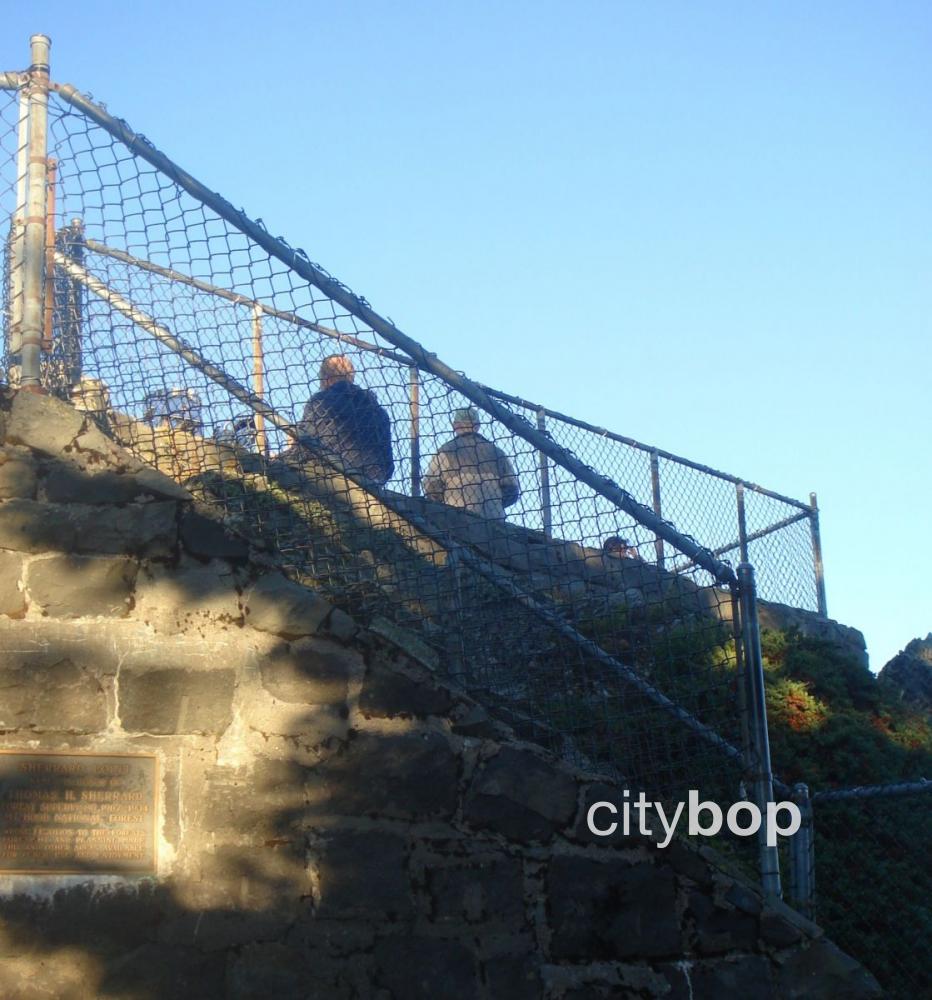
These are a few stairs to the summit at Sherrard Point, where you get an eagle eye's view of the the Mt Hood National Forest.
3. Admire the sweeping gorge views from the historic View Point Inn.
Drive back down Larch Mountain to merge onto the Historic Highway. On the way down, check out the historic View Point Inn, with glorious views over the Columbia River Gorge.
The View Point Inn is on the National Register of Historic Places, and was constructed in 1924 as a roadstop for visitors traveling the Historic Highway along the Columbia River Gorge. It also attracts Twilight fans, as the location for the prom scene with Edward and Bella in the Twilight Saga (2008).
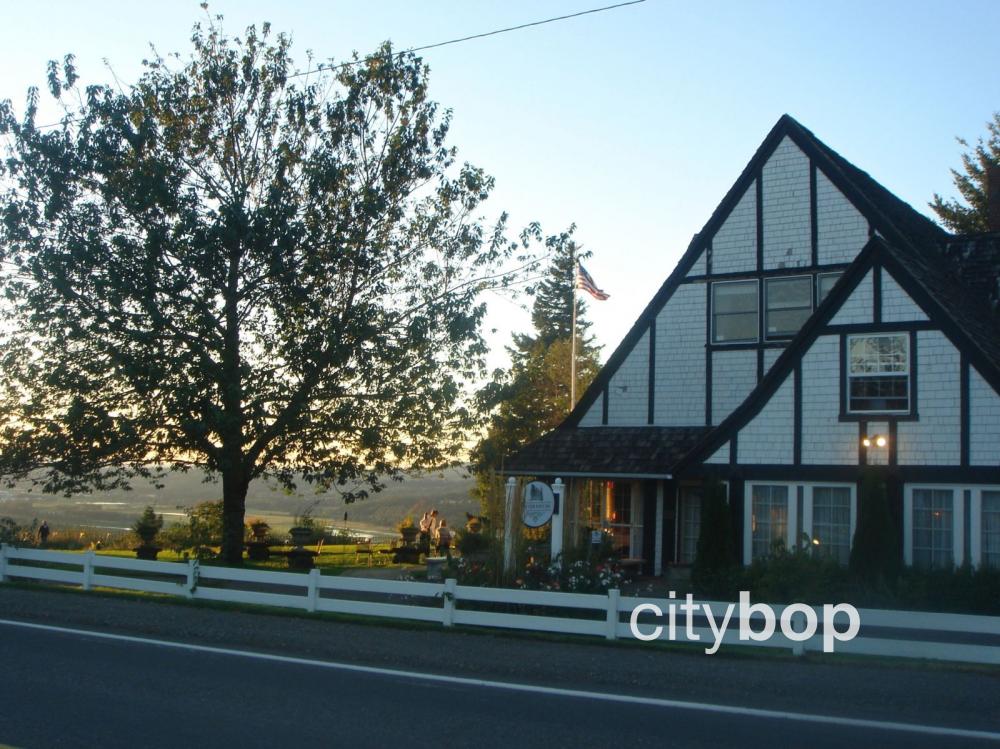
Unfortunately the View Point Inn was closed down by a fire in 2011, when sparks from the chimney ignited the structure's shingle roof. The second floor was engulfed by flames, and the building sustained flood damage. The new owners hope to restore it to its former beauty.
The View Point Inn had a lovely lawned area before the 2011 fire, popular for special events like weddings. You can't beat those views of the Columbia River!
4. Tour the landmark Vista House.
Once back on the Historic Highway it's a 5-minute drive to Vista House on Crown Hill at the Columbia River Gorge.
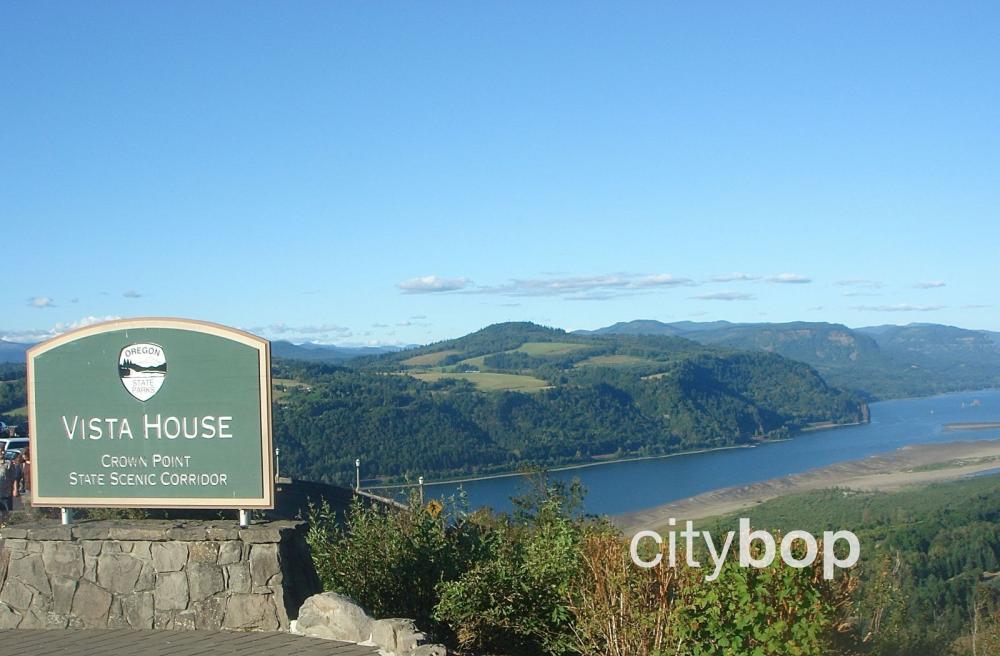
Vista House is a prominent rest stop and observatory that was designed by Portland Architect Edgar Lazarus between 1916-17. It sits on top of a 733-foot basalt promontory, with panoramic views of the Columbia River Gorge.
The octagonal building has a gift shop, interpretive displays, a restroom, and an upper level viewing platform for even better views. No detail was spared, and the sandstone walls are off-set by an ornate, green-tiled roof.
The elegant interior has marble floors and stained glass windows, catering to the refined tastes of the wealthier travelers of the 1920s, who could afford to take motoring roadtrips. Architect Edgar Lazarus described it as a "temple to the natural beauty of the gorge".
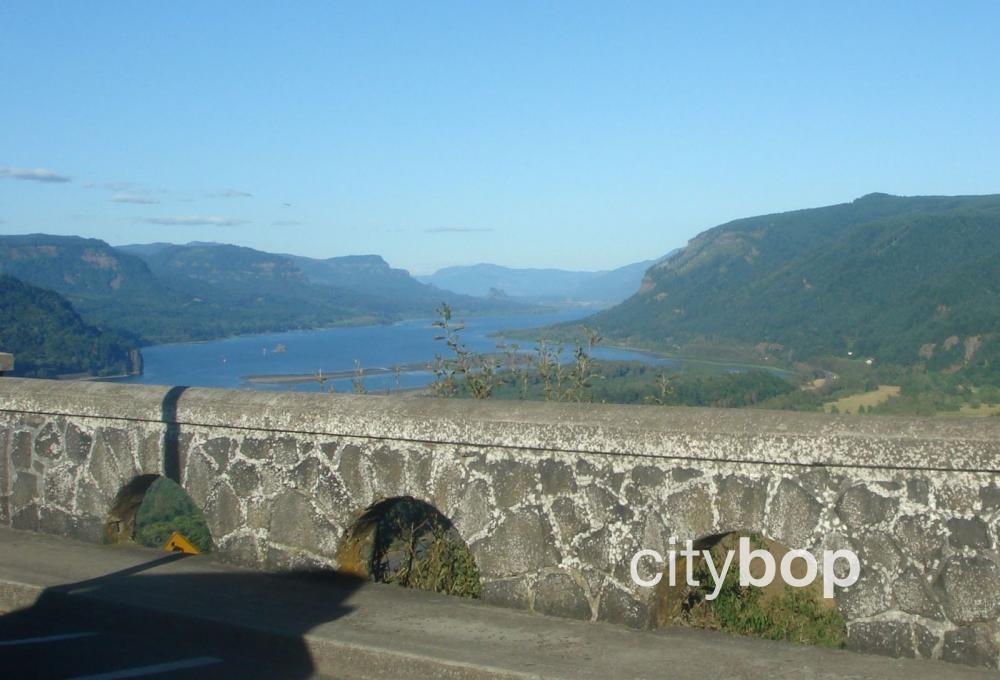
Vista House has the best perspective up and down the Columbia River Gorge, with many prominent landmarks visible. The Beacon Rock monolith can be seen in the distance, standing 848-feet tall on the north bank of the Columbia River. Lewis and Clark named it in 1905, during their famous expedition to the Pacific Coast.
The Columbia River is the fourth largest river in the United States, flowing 1,243 miles from the Rocky Mountains in British Columbia down to the Pacific Ocean, forming the border between Oregon and Washington State.
The Columbia River looked much different a hundred years ago, before dozens of dams were constructed to tame its wild waters and form the world's largest hydroelectric system. The most famous of these dams are the Grand Coulee and Bonneville Dams. In the process, beautiful wonders like the Celilo Falls were submerged and lost forever, and salmon populations were depleted.
5. Explore Latourell, Bridal Veil and Wahkeena Falls.
The Historic Highway continues east from Vista House, down a hair-raising descent with plenty of switchbacks. From here, the Historic Highway passes a number of beautiful waterfalls, including Latourell Falls, Bridal Veil Falls and Wahkeena Falls. Each of these waterfalls offers a gorgeous hike with stunning waterfalls.
Latourell Falls has a lower falls (224 feet), and an upper falls (134 feet), that can be viewed along a 2.3 mile loop trail. Bridal Veil Falls (120 feet) is a two tier waterfall, with a 0.6 mile lower trail to an observation deck at the base of the waterfall. Wahkeena Falls (242 feet) cascades down in four tiers, with a 0.3 mile path to the lower falls.
6. Visit magnificent Multnomah Falls.
A short distance up the highway, dedicate plenty of time to Multnomah Falls. Multnomah is the second highest waterfall in the US and easily the most spectacular at the Columbia River Gorge. Please note that due to traffic congestion, a Timed Vehicle Access Permit might be required to park from May through September. In addition a Timed Use Permit might be required to visit the waterfall. Always check ahead.
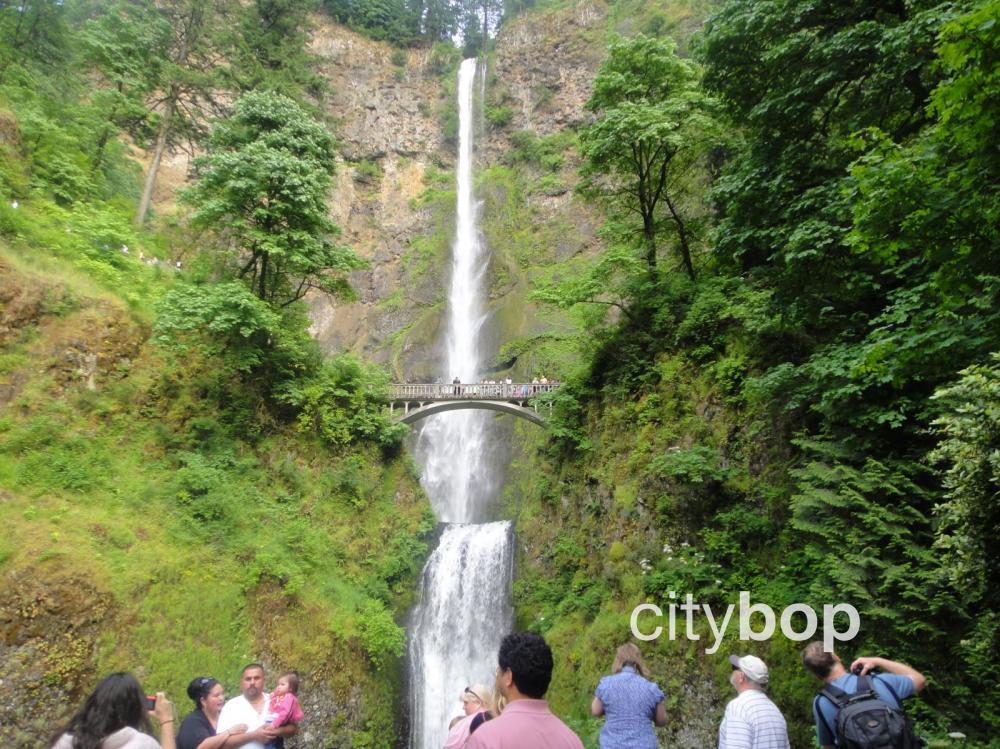
The falls plummet 543-feet from the upper plunge pool, and another 69-feet to the lower plunge pool. Get closer views of the upper plunge pool by walking across the Benson Bridge overlooking the falls.
7. Stop at Multnomah Falls day lodge for gifts, lunch or a snack
Multnomah Falls has a historic day lodge. Pick up an icecream or snack at the kiosk, or dine inside the charming restaurant at the lodge. There's also a visitor center and gift shop, where you can get useful maps on local hikes in the Columbia River Gorge. There is no overnight lodging on the premises.
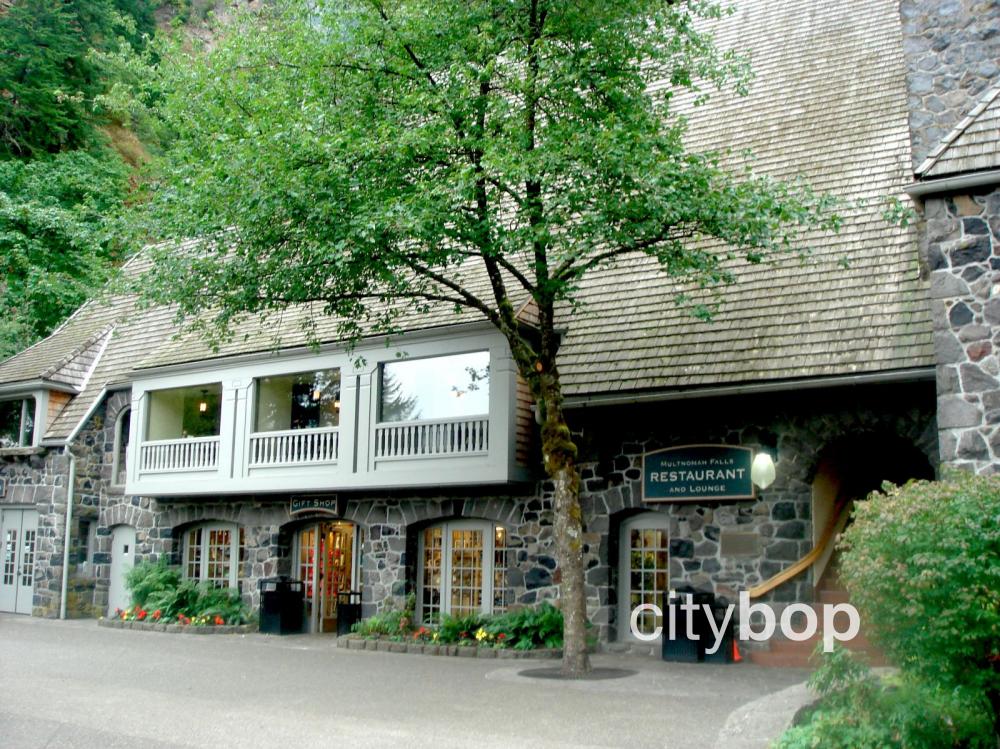
8. See mysterious Oneonta Gorge.
Oneonta Gorge is another popular stop, providing a glimpse inside the lush interior of the Columbia River Gorge.

This stunning chasm has a heavily trafficked hike to a series of waterfalls. Unfortunately there is no pathway, so visitors must make the dangerous walk upstream. Large boulders can tumble into the stream, and flood waters can rise to unsafe levels.

Onenota Gorge is lined with ferns and moss laden, basalt rock.

There are steps down to Oneonta Gorge from the Historic Highway, but from here there is no path.
9. Stop for a photo at the roadside Horsetail Falls.
Your final stop on the Historic Highway is Horsetail Falls (176 feet) which bears an uncanny resemblance to the shape of a horsetail. Horsetail Falls can be viewed from the highway, or you can take a steep hike that travels behind the base of the waterfall.
10. End the Historic Highway at Dodson.
The Historic Highway continues along the Columbia River Gorge then ends at Dodson.
Where to stay at the Columbia River Gorge.
There are some lovely lodges within a short distance of the Columbia River Gorge.
The McMenamins Edgefield is in Troutdale, with a resort-like setting in an old farm that includes a historic building, restaurants, bars, and beautiful gardens.
The luxurious Skamania Lodge is 11-miles east of Dodson across the river, with an indoor swimming pool, spa and stunning restaurant.
Thirty minutes east of Dodson there are a range of lodging options in the vibrant tourist town of Hood River. These include the Best Western Plus, Columbia Cliff Villas, Columbia Gorge Hotel, and Hood River Hotel.
If you'd prefer to camp, book a campsite at Ainsworth State Park on the Historic Highway.
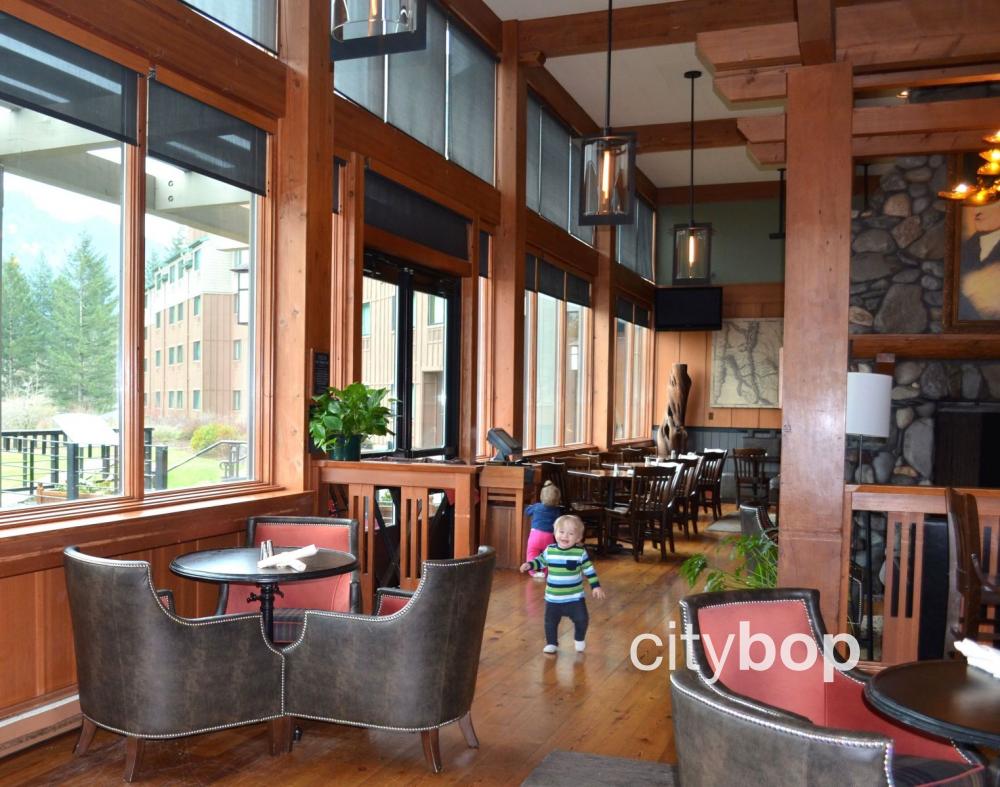
This is the lovely restaurant in the Skamania Lodge, with a rustic, northwestern feel.
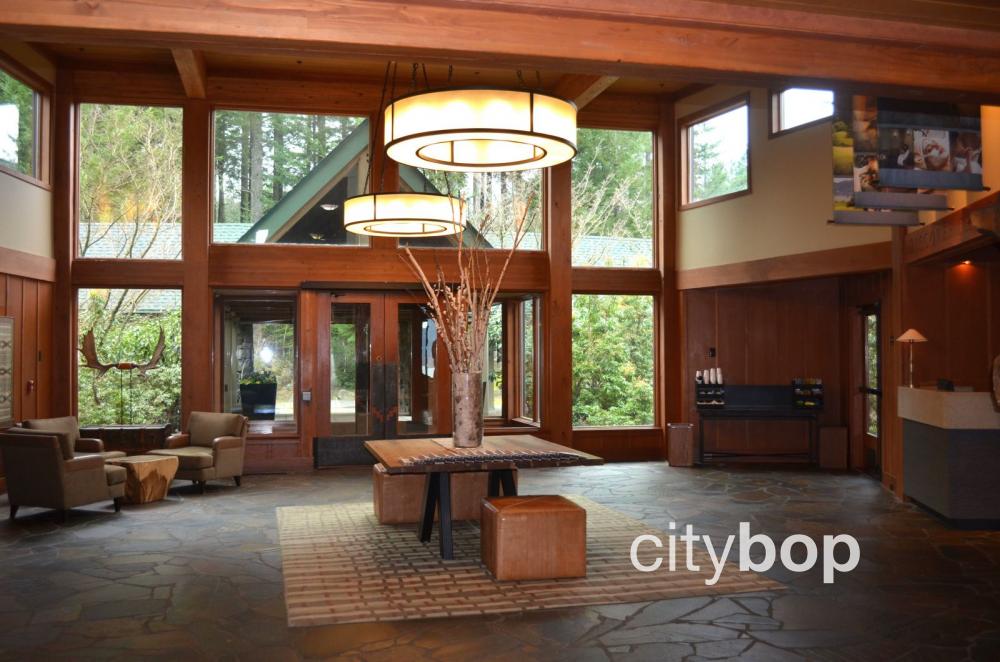
Relax in the lobby of the Skamania Lodge, with a coffee and tea stand, and comfy, leather chairs to sink into.
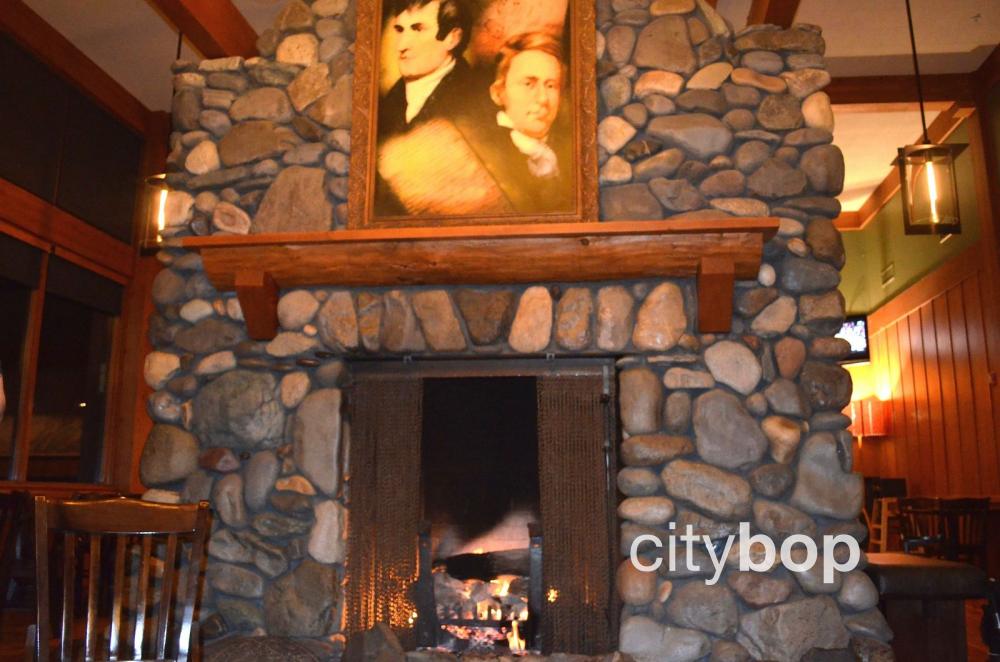
Select a table near the roaring fire at the Skamania Lodge.
Where can I eat at the Columbia River Gorge?
When touring along the Historic Highway, the best places for lunch include the beautiful restaurants at the Multnomah Falls Lodge and McMenamins Edgefield. Hood River also has a great selection but is further east. If you make it to Hood River, drive to the Waterfront Park on the river and eat at either pFriem Family Brewers or Solstice Wood Fire Pizza. There's also a fabulous playground across the road.
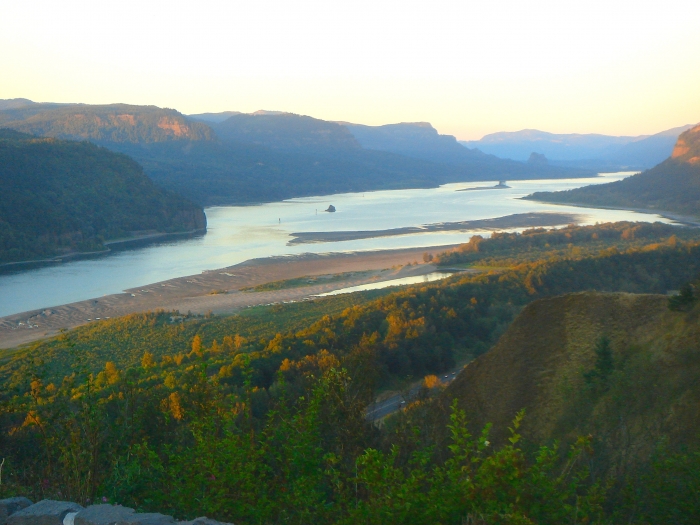
Review this attraction